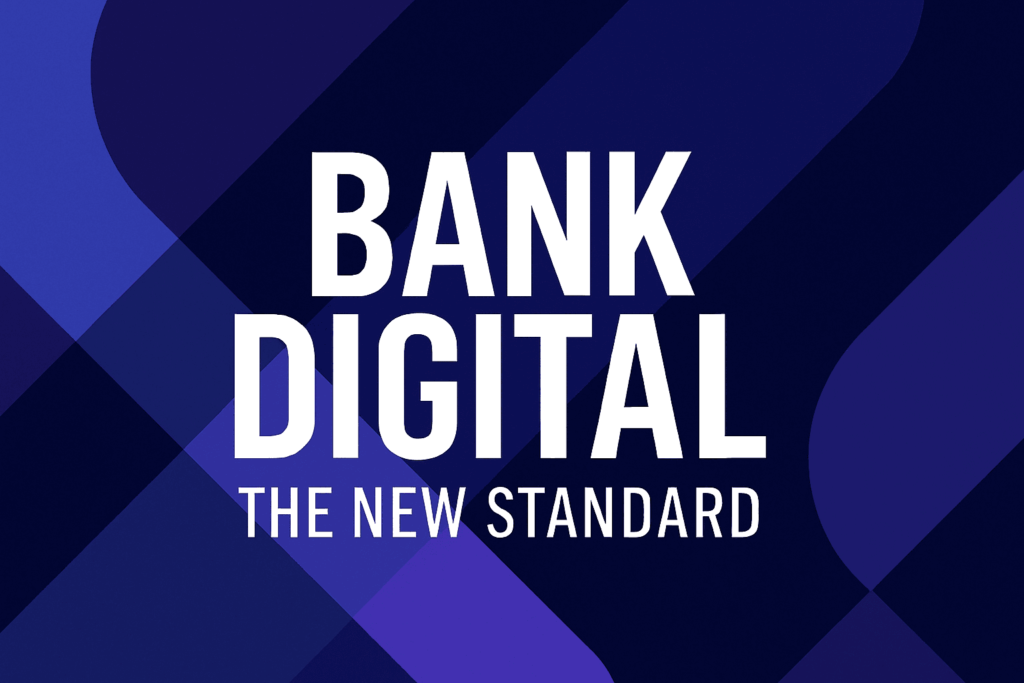Banking has entered a new era. What was once defined by branches, paper forms, and long queues is now shaped by apps, automation, and 24/7 access. To bank digital today is no longer a novelty, it is the default. From account opening to investment tracking, every core function of traditional banking now has a faster, more user-friendly counterpart online.
This transformation has not happened overnight. Over the past decade, banks have invested heavily in digital infrastructure, rethinking everything from customer journeys to internal workflows. Alongside them, digital-only challengers have emerged, pushing the boundaries of what banking can look like when built entirely on technology.
In this article, we explore what it means to bank digital in 2025, how traditional and digital-native banks compare, and what this shift means for customers, businesses, and the future of financial services.
What Does It Mean to Bank Digital?
To bank digital means managing your financial life through digital platforms. This includes mobile apps, online portals, chatbots, and virtual advisors. It allows users to check balances, make payments, apply for loans, invest, and plan their finances without needing to visit a physical branch.
Digital banking goes beyond basic online access. It also includes real-time notifications, spending insights, budget planning tools, and seamless integrations with other platforms. Whether it is a neobank or a traditional bank with a strong app, the core idea is the same, banking that fits into your life, not the other way around.
Users can access services on their terms, at any time, with full control and visibility. For many, especially younger generations, the ability to bank digital is not just a preference, it is an expectation.
The Rise of Digital-Only Banks
Neobanks, or digital-only banks, have played a major role in redefining the banking experience. These institutions operate entirely online, with no branches or physical infrastructure. Instead, they offer streamlined apps, lower fees, and faster account opening.
Companies like Monzo, N26, Starling Bank, and Revolut gained early traction by solving real pain points. They introduced instant payment notifications, multi-currency accounts, user-friendly interfaces, and transparent pricing. Their growth forced incumbents to rethink their approach.
Digital banks often appeal to those looking for simplicity, innovation, and more control over their finances. They also tend to offer better foreign exchange rates, integrated savings tools, and spending analytics.
Yet, they still face challenges. Profitability, regulatory complexity, and customer trust can be harder to build at scale. This is where traditional banks have an advantage, which is why many digital players now partner with established institutions to expand their services.
How Traditional Banks Are Going Digital

Traditional banks have not been left behind. In fact, many are leading the digital shift. Institutions like Barclays, Lloyds, and Santander have invested heavily in their digital channels, redesigning customer journeys and integrating new technologies.
These banks offer hybrid models, where customers can use apps for everyday tasks but still access human support when needed. They are introducing AI-driven chatbots, robo-advisory services, and embedded finance options to remain competitive.
Importantly, traditional banks benefit from trust, scale, and regulatory experience. Their digital transformation is often slower, but it is built on deep infrastructure and long-standing customer relationships.
In 2025, the line between digital and traditional is increasingly blurred. Most large banks now operate as digital-first organisations, even if they still maintain a physical presence.
Key Features of Digital Banking Today
Modern digital banking platforms come with a range of features designed to simplify financial management. These typically include:
- Instant account setup and identity verification
- Biometric login and two-factor authentication
- Real-time transaction notifications
- Customisable budgeting and savings goals
- Integrated investment platforms
- Peer-to-peer payment options
- Access to customer service via live chat or video
Additionally, many banks now offer open banking integrations. This allows users to see accounts from multiple institutions in one place, track spending across categories, and initiate payments through connected platforms.
These features make it easier for users to stay on top of their finances and make informed decisions.
Security and Trust in a Digital World

With more services moving online, security becomes even more important. Digital banks and traditional institutions alike are investing in robust cybersecurity measures to protect customer data and prevent fraud.
This includes end-to-end encryption, behavioural analytics, device monitoring, and biometric verification. Users are also becoming more aware of the importance of secure practices, such as using strong passwords and enabling multi-factor authentication.
Regulators are closely monitoring this space, ensuring that digital banking providers comply with data protection laws, anti-money laundering regulations, and operational resilience standards.
Trust is built not only through secure systems, but also through transparency. Digital banks that clearly explain their pricing, policies, and product terms tend to retain more loyal customers.
The Future of Bank Digital
Looking ahead, digital banking will become even more personalised, automated, and integrated. Artificial intelligence will play a larger role in financial advice, fraud prevention, and personalised product recommendations.
Banks will continue embedding their services into third-party platforms, such as e-commerce sites, accounting tools, and ride-sharing apps. This shift towards embedded finance means users can access banking functions wherever they are needed, not just through the bank’s own app.
Voice banking, wearable integrations, and financial health scores are also on the horizon. These tools will offer users deeper insights into their money and more seamless ways to interact with their financial provider.
Ultimately, to bank digital in the future will mean a continuous, intuitive, and intelligent financial experience that supports both daily needs and long-term goals.
Digital banking is no longer a feature, it is the standard. Whether provided by a legacy institution or a tech-driven newcomer, the ability to bank digital has transformed how people manage money.
As new technologies emerge and customer expectations rise, banks will need to keep adapting. Those that offer transparency, security, and truly user-centric design will thrive.

